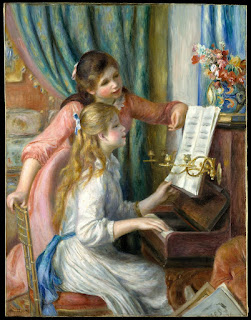“Perfection is not attainable. But if we chase perfection, we can catch excellence.”
― Vince Lombardi
Perfectionism gets a bad rap. And for good reason. After all, a musical performance can never be perfect. There are too many balls to keep in the air at once. One can’t help but occasionally drop something. So it would seem that perfectionism has no place in the practice room. After all, why chase the impossible?
But this is a misunderstanding of what perfectionism should be. It’s not a result. Rather, it’s a vital element to producing an admirable result. Perfectionism itself is neither good nor bad. It’s like fire: you can warm your home with it, or you can burn your home to the ground with it. The result depends on how you use it.
It helps to treat perfection as a malleable thing. For example, some believe a perfect performance is one in which every note is a polished diamond, dutifully in attendance at its appointed time. But that’s wrong. Hearing a meticulously burnished performance is like hearing a computer-generated midi file. It’s boring. A great performance is unpredictable. Things happen that throw a listener off balance. One can’t do this with notes neatly arranged like ducks in a row.
Some years ago a student of mine did a class with a virtuoso. He got to hear the player while sitting right next to him. Afterward, I asked my student if the virtuoso had an absolutely pristine sound. “No, he didn’t!” replied my student with surprise. “Up close, there’s a slight roughness to his sound. But he makes it sound great.” We discussed this, and my student realized that misdirected perfection is a black hole. When a player is too fixed on perfection, it scrubs the passion out of the music. There’s a delicate balance at work. Too much perfection is itself an imperfection. It’s a misunderstanding of what great players want to do. Great players are obssessed with an emotional effect. The closer they get to it, the closer they are to musically meaningful perfection.
Perfection varies from person to person. The perfectionism of a master isn’t appropriate to a beginner. But aiming to be perfect is apt for both. The master may aim for the nuances of a style that sound like no one else. The beginner may aim to keep a steady beat while playing open string notes. So while the individual goal varies, the standard is the same for both master and beginner. Each tries to perfect something suited to their level.
Some people freak out when trying to be perfect. They’re dismayed when they fall short. But dwelling on the shortfall is the wrong idea. When aiming for perfection, falling short is inevitable. That’s not what matters. What matters is that high goals make high achievement more likely.
In playing an instrument, no one gets exactly what they aim for. Making music is far too complex for that. What really happens is that we all fall short of our ideal. Even great players fall short of the performance in their minds. In a quiet moment after the applause subsides, the great player likely thinks: “Not bad, but I wish I had done that vibrato just the way I wanted.”
What great players know—and what all of us can learn—is that steady perfectionism during practice raises what we can do in performance. In the hurly-burly of performing, we need not be perfect. We just need to get close enough that the tiny flaws don’t matter.
In optics, there’s something called the “1/4th wave rule.” When making an optical lens or mirror, one doesn’t have to be perfect. Instead, one must produce an optical surface that’s accurate to within 1/4th of a wavelength of light. A lens or mirror that meets this standard will, for all practical purposes, behave as though it’s perfect. So the 1/4th wave rule is a threshold. Meet the threshold, and you’re essentially perfect.
Good players know this. They know they must strive for perfection as they practice. Then in performance, they turn off perfectionism and go with what they’ve got. If their practice was good, then their performance likely will be good. Yes, there will be flaws. But the good will outweigh the bad. Listeners will be happy, and the player will live to play another day. (“Hey, maybe the next performance will catch lightning in a jar.”)
Perfection is a moving target. The better the player, the more individual and varied is his or her definition of perfection. Among great players, perfection contains multitudes.


